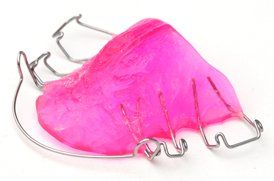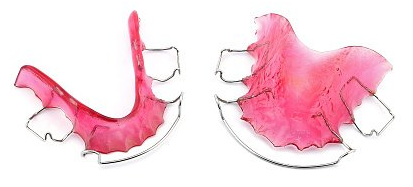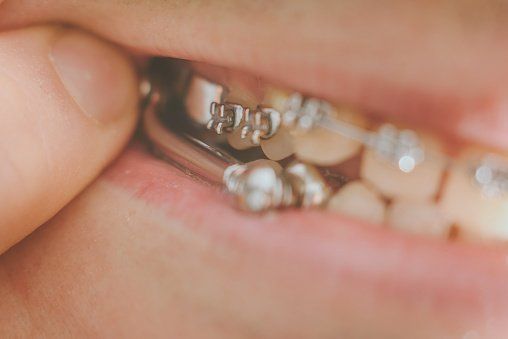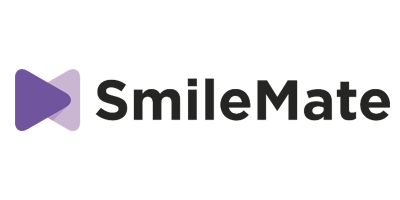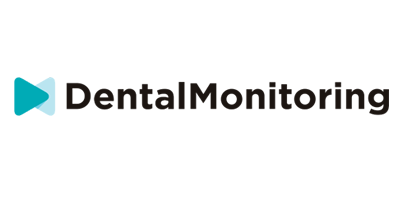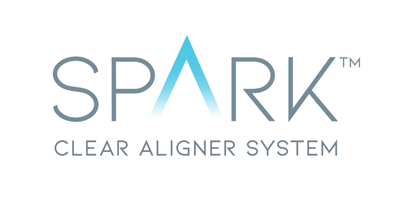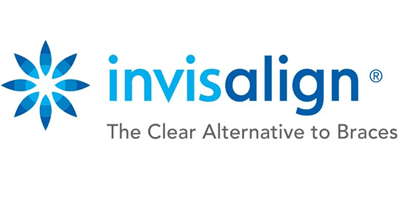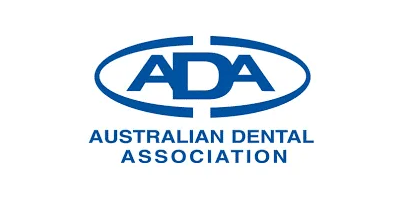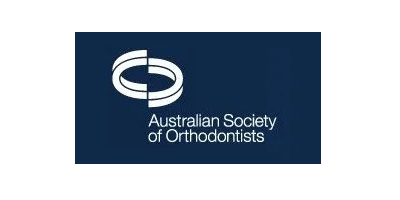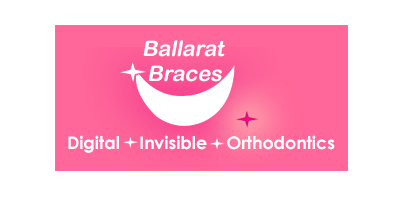Need More Info?
Call Us Today
Specialised Kid's Braces and Orthodontics Treatment in Ballarat
Removable Plates
Dr Deborah Sykes may have recommended you wear a removable plate to straighten your teeth.
Removable plates are often used to straighten teeth as they are growing especially if you do not have all your adult teeth yet. A removable plate can help the teeth and jaws develop better as you are growing and help correct problems earlier.
How is the Plate Made?
Your plate is made from a 3D scan of your teeth which will be taken at the Orthodontic surgery. Your removable plate is then made with a plastic base and wires. The wires are there to either hold the plate in place (clasps) or to move the teeth (springs). Sometimes an ‘expander’ screw is placed in the middle of the plate to help widen jaws so they fit together better.
- How to Put Your Plate in?
Position the wire and springs as you are shown. Then firmly press the plate on the plastic into position. If after seating the plate, the springs are not in the correct position, remove the plate and start again.
- How to Remove Your Plate?
With a finger on each side, pull on the clasps on the back teeth – never on the springs or the front wire.
- When to Wear Your Plate?
Dr Deborah Sykes will give you specific instructions, depending on your type of problem she is correcting. Your plate must be worn all the time (i.e. day and night), and may be taken out for eating and cleaning in most cases.
- Sport
Remove your plate before swimming or playing sport and keep it safe in the protective box that was given to you with the plate.
Don’t forget to put your plate back in!
- Cleaning Instructions
After eating, take your plate out and brush your teeth, gums and your plate with a toothbrush and toothpaste. Rinse your plate and mouth with water if you do not have a toothbrush with you.
Plate Box
Please make sure your name and phone number are on the box. If it does get lost and it is found, it may be returned to you.
- Helpful Hints
- Do not eat chewing gum, as it sticks firmly to the plates unless it is ‘Freedent’ gum.
- Do not flick the plate up and down with your tongue. This will break the clasps that hold the plate in place.
- Speech
You may have a little difficulty in talking and eating at the beginning. This will pass in a couple of days providing the plate is worn as directed and is well seated.
- Appointments
Once the plate is fitted you will need to come back to the surgery for appointments every 4-6 weeks depending on the type of plate you have.
If you forget your appointment then please ring for another appointment.
- Lost or Broken Plates
Unfortunately, you will have to pay for a new plate or any repairs. A new impression will be needed. Make an appointment at the surgery as soon as possible so treatment is not delayed.
Jaw Correctors
Orthodontics isn’t just about straight teeth. Jaws can sometimes not match and look wrong in your face, and hence your teeth don’t fit together properly. For example, the bottom jaw is too far back and makes your top teeth look too far forward or ‘bucky’.
Jaw correctors, or functional appliances, can change the fit of your jaws in most cases but this depends on your age and your treatment needs.
There are removable/functional jaw correctors or fixed bite correctors.
Dr Deborah Sykes is a Specialist Orthodontist and can recommend a treatment that corrects your jaw relationship or your bite problem.
Removable Jaw Correctors/Functional Appliances
A removable jaw corrector or functional appliance is a pair of removable plates that work on the upper and lower teeth at the same time. It is called a “Clark Twin Block” (CTB).
- How long do I need to wear the CTB?
You need to wear your CTB, full time otherwise the treatment will not be successful or will take longer to complete. For the treatment to work, it is important you follow these instructions. You will find the improvement in the position of your teeth can be quite dramatic.
- Will It Be Painful?
It may be sore for about 3-5 days after the plates have been fitted. You are not likely to need pain control, but if necessary, pain control such as the ones you would normally take for a headache, may help (please read the instructions on the packet). If there is an obvious area of soreness as a result of the plates, ring for an appointment as soon as is reasonably possible.
- How Will Things Be Different?
Your speech will be different. Practice speaking with the plates in place, e.g. read out aloud at home on your own, and in this way your speech will return to normal in a couple of days.
You may also find yourself swallowing a lot to begin with. This is quite normal and will quickly pass.
You may also find that a lot of saliva tends to build up in your mouth. This should slow down once you are used to wearing the plates. Try to swallow the excess saliva, you will adjust quickly enough.
- Can I Eat Normally?
You may not be able to eat with your functional appliance in place to start with. You will be advised about this. If you need to take it out for eating, make sure you put it into the box provided for safekeeping.
- How Do I Look After The Plate?
For your orthodontic treatment to work well and in the shortest possible time, it is important you take care of your teeth and brace. In order to prevent damage to both, you should avoid the following:
- Toffees, boiled sweets, sugared chewing gum, chocolate bars, etc.
- Fizzy drinks including diet drinks, excessive amounts of fruit juice.
- Do not flick the plates in and out with your tongue as this will break the wires and make it loose. It may increase the length of time the treatment will take, and there may be a fee to repair the plates.
- What About Tooth Brushing?
It is important you brush well three times per day after meals and use a fluoride toothpaste. If possible carry a brush with you for use after lunch. Take the plates out to clean your teeth. You should also gently brush the plates, taking care not to damage the wires.
If you don’t have your toothbrush with you then rinse your teeth and plates with water after eating to get rid of any food left in your mouth or on the plates.
A daily fluoride mouth rinse should be used last thing at night after tooth brushing. If you don’t clean your teeth and plates, you may get permanent decays of your teeth.
- Can I Remove The Brace?
The plates you are now wearing are removable but only should be removed for cleaning unless otherwise advised. When it is not in your mouth, it should be in its protective box (not in a tissue or serviette, or pocket, etc.)
- How Long Will Treatment Take?
This can vary according to the severity of your bite problem. Most of the work with these plates is usually completed in about 12 months. You may have to then wear the plates at nights for a while or you may progress to a second phase of treatment with a different type of brace. You will be advised about this.
Failed and cancelled appointments or repeated breakages of the brace will add to the overall treatment time.
- How Often Will I Need An Appointment?
You will need regular appointments during treatment for the brace to be adjusted every 8-10 weeks.
If you have a problem with your brace then ring the surgery to discuss the problem as soon as possible so the problem can be fixed.
- Do I Still Need to See My Regular Dentist?
Yes. It is important you have check-ups with your regular dentist throughout orthodontic treatment to check for decay.
- What Do I Do If I Play Contact Sports?
You should wear a mouthguard instead of your functional appliance when you play contact sports.
When not in your mouth the brace should be in a protective box.
- What Do I Do If My Brace Breaks?
Ring up for an appointment as soon as is reasonably possible. Do not wait until your next routine appointment as the breakage may slow your treatment, or may result in damage to your teeth.
You may be charged for the repairs if you have not followed the care instructions.
Lost plates will be charged for as they are not covered under the initial fee.
If you repeatedly break the plates your brace treatment may be stopped.
You are the only one who can wear the plate and ensure your treatment is successful.
- How Long I Need To Wear The CBJ?
You need to wear your CBJ full time for at least 12 months otherwise the treatment will not be successful or will take longer to complete. For the treatment to work, it is important you follow these instructions. You will find the improvement in the position of your teeth can be quite dramatic.
- Will It Be Painful?
You need to wear your CBJ full time for at least 12 months otherwise the treatment will not be successful or will take longer to complete. For the treatment to work, it is important you follow these instructions. You will find the improvement in the position of your teeth can be quite dramatic.
- How Will Things Be Different?
Your speech will be different. Practice speaking with the brace in place, e.g. read out aloud at home on your own, and in this way your speech will return to normal in a couple of days.
You may also find yourself swallowing a lot to begin with. This is quite normal and will quickly pass.
You may also find that a lot of saliva tends to build up in your mouth. This should slow down once you are used to wearing the plates. Try to swallow the excess saliva, you will adjust quickly enough.
- Can I Eat Normally?
You may find it difficult to eat with your functional appliance in place to start with. You will be advised about this. You will get used to it with time.
- How Do I Look After The Plate?
For your orthodontic treatment to work well and in the shortest possible time it is important you take care of your teeth and brace. In order to prevent damage to both, you should avoid the following;
- Toffees, boiled sweets, sugared chewing gum, chocolate bars, etc.
- Fizzy drinks including diet drinks, excessive amounts of fruit juice.
- What About Tooth Brushing?
It is important you brush well three times per day after meals and use a fluoride toothpaste. If possible carry a brush with you for use after lunch. You should also gently brush the brace, taking care not to damage the wires.
A daily fluoride mouth rinse should be used last thing at night after tooth brushing. If you don’t clean your teeth and brace you may get permanent decays of your teeth.
- Can I Remove The Brace?
The brace you are now wearing is cemented onto your teeth and cannot be removed.
- How Long Will Treatment Take?
This can vary according to how severe your case is. Most of the work with this brace is usually completed in about 12 months. You may progress to a second phase of treatment with a different type of brace. You will be advised about this.
Failed and cancelled appointments or repeated breakages of the brace will add to the overall treatment time.
- How Often Will I Need An Appointment?
You will need regular appointments during treatment for the brace to be adjusted every 8-10 weeks.
If you have a problem with your CBJ then ring the surgery to discuss the problem as soon as possible so the problem can be fixed.
- Do I Still Need to See My Regular Dentist?
Yes. It is important you have check-ups with your regular dentist throughout orthodontic treatment to check for decay.
- What Do I Do If I Play Contact Sports?
You can wear a mouthguard over your functional appliance when you play contact sports. These double mouthguards are available at the surgery. It will need to be fitted at the surgery.
- What Do I Do If My Brace Breaks?
Ring up for an appointment as soon as is reasonably possible. Do not wait until your next routine appointment as the breakage may slow your treatment, or may result in damage to your teeth.
You may be charged for the repairs if you have not followed the care instructions.
If you repeatedly break, the brace your brace treatment may be stopped.
You are the only one who can wear the brace and ensure your treatment is successful.
TREATMENTS
Locate Us
1424 Sturt Street Ballarat, VIC 3350
Get directions >>
Business Hours
- Mon - Thu
- -
- Fri - Sun
- Closed

